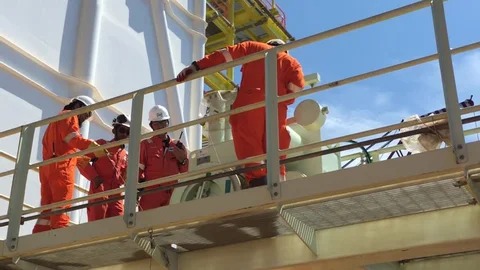A Comprehensive Guide to Successful Process Safety Management Implementation
The Art of Behavior-Based Safety Training: Building a Resilient Workforce
July 20, 2023
Understanding Process Hazard Analysis: A Critical Component of Industrial Safety
July 21, 2023In this article, we delve into the world of Process Safety Management (PSM) implementation, revealing the key steps and best practices for achieving success. Whether you’re a seasoned professional or new to the field, understanding the intricacies of PSM is crucial for safeguarding your organization’s operations and protecting lives. We’ll navigate through the challenges and complexities, offering practical insights and actionable strategies that can revolutionize your approach to process safety. So buckle up, as we embark on a comprehensive journey towards ensuring a secure and efficient workplace. Get ready to gain the knowledge and tools you need to conquer the realm of PSM.
Introduction
Every industry, be it manufacturing, chemical, or oil and gas, faces inherent risks associated with their processes. These risks can range from equipment failure and human error to the release of hazardous substances. To mitigate these risks and ensure the safety of workers and the surrounding community, organizations must implement a robust Process Safety Management (PSM) system. In this comprehensive guide, we will delve into the world of process safety management and provide you with valuable insights to successfully implement PSM in your organization. We will explore the essential elements of PSM, discuss how to identify and analyze process hazards effectively, highlight the importance of building a competent PSM team, emphasize the need for regular audits and inspections, and stress the significance of continuous improvement
Understanding Process Safety Management
Process Safety Management (PSM) is a systematic approach that aims to prevent and mitigate incidents in industries dealing with hazardous substances. It encompasses a comprehensive set of principles, policies, and practices designed to protect the safety and well-being of workers, the community, and the environment. At its core, PSM focuses on identifying and controlling potential hazards associated with various processes, such as chemical reactions or storage of flammable materials.
The foundation of understanding process safety management lies in recognizing that accidents can occur when there is a deviation from normal operating conditions or when critical controls fail. By implementing an effective PSM program, organizations can proactively identify risks, establish procedures to manage them, and minimize the likelihood of catastrophic events. Emphasizing thorough hazard identification techniques like Hazard and Operability Studies (HAZOP) or Failure Mode and Effects Analysis (FMEA), companies can gain insights into potential failures and devise preventive measures accordingly.
In essence, understanding process safety management entails recognizing its role as a proactive measure rather than merely reactive fire-fighting. By embracing this approach wholeheartedly, organizations create safer work environments where risks are minimized through comprehensive planning, effective monitoring tools like Process Safety Information Systems (PSIS), regular audits for compliance assessment – all resulting in improved operational efficiency alongside enhanced protection for all stakeholders involved
Essential Elements of Process Safety Management
The bedrock of a successful process safety management implementation lies in understanding and implementing the essential elements that form its foundation. These elements serve as the pillars upon which a robust safety culture is built, ensuring the protection of personnel, facilities, and the environment.First and foremost, establishing clear process safety objectives is paramount. These objectives should be aligned with industry standards and regulatory requirements, while also addressing site-specific hazards. By defining these objectives, organizations can focus their efforts on minimizing risks and preventing incidents through proactive measures.
Another critical element is conducting thorough process hazard analyses (PHA). This involves systematically identifying potential hazards and assessing their severity, likelihood of occurrence, and potential consequences. By conducting PHAs regularly for all processes within an organization, risks can be mitigated using appropriate control measures such as engineering controls or procedural changes.
Furthermore, effective management of change (MOC) procedures are essential to ensure that any modifications to processes or equipment are carefully evaluated before implementation. This includes assessing potential impacts on safety systems, training requirements for personnel, and overall risk reduction strategies. A comprehensive MOC process guarantees that changes are made in a controlled manner without compromising safety.
Identifying and Analyzing Process Hazards
In this crucial stage of process safety management implementation, the focus shifts towards identifying and analyzing potential hazards within the system. This involves a meticulous examination of every aspect of the process to identify any factors that may pose a risk to personnel, equipment, or the environment. A comprehensive hazard analysis methodology should be employed, such as HAZOP (Hazard and Operability Study), FMEA (Failure Mode and Effects Analysis), or PHA (Process Hazard Analysis).
It is essential to consider not only existing hazards but also potential future dangers that may arise due to changes in technology or processes. By integrating predictive techniques like scenario planning or utilizing advanced predictive analytics tools, organizations can stay ahead of emerging risks and ensure their safety protocols remain effective in dynamic environments.
Remember: uncovering hazards is not meant to instill fear but rather empower organizations with knowledge for proactive risk mitigation strategies. With proper identification and analysis of process hazards at hand, organizations can move forward confidently towards implementing robust control measures that safeguard both their workforce and their operations
Building an Efficient Process Safety Management Team
A vital component of successful process safety management implementation is the establishment of an efficient and capable team. This team should consist of individuals who possess a diverse range of skills, knowledge, and experience in relevant fields such as engineering, operations, maintenance, and safety. Their collective expertise will contribute to a holistic approach in identifying potential hazards and implementing effective risk mitigation strategies.
The team formation process should focus on selecting members who demonstrate strong problem-solving abilities, excellent communication skills, and a proactive mindset towards safety. Each individual should be assigned specific roles and responsibilities that align with their strengths and expertise. By fostering collaboration and effective teamwork within the group, the team can harness its collective intelligence to address complex challenges that may arise during the implementation of process safety management measures.
Ensuring Effective Training and Competency Development
In order to foster a culture of safety and ensure the success of process safety management, it is crucial to invest in effective training and competency development. Training programs should encompass both theoretical knowledge and practical skills to equip employees with the necessary tools to identify hazards, mitigate risks, and respond appropriately in critical situations.
A thought-provoking idea: Imagine a world where every employee is not just competent but truly excels in their understanding of process safety management. They become the guardians of their workplace, detecting potential hazards before they manifest, and taking swift action to prevent accidents or incidents. With effective training and competency development programs in place, this vision can become a reality.
Furthermore, organizations must prioritize ongoing competency development through regular follow-up sessions or refresher courses. This ensures that employees stay up-to-date with evolving best practices within the industry while reinforcing foundational knowledge.
By investing time and resources into comprehensive training programs that focus on competency development at all levels of an organization’s hierarchy – from operators to managers – companies can cultivate a workforce that embodies a strong safety culture. Empowered individuals will not only protect themselves but also contribute proactively towards creating safer working environments for all
Conducting Regular Audits and Inspections
Regular audits and inspections are crucial for maintaining a robust process safety management (PSM) system. These proactive measures help organizations identify potential hazards, assess compliance with safety standards, and ensure that control measures are effective.
During audits, qualified personnel thoroughly evaluate all aspects of the PSM system, from documentation to operational procedures. They scrutinize equipment integrity, process design, emergency response plans, and employee training records. Rigorous inspections are carried out to detect any deviations from established protocols or signs of deterioration that could compromise safety.
Engaging in regular audits not only enhances overall operational efficiency by identifying areas for improvement but also demonstrates a commitment to safeguarding employees’ well-being. It cultivates a culture of transparency and accountability where all stakeholders contribute to maintaining a safe work environment. Through these proactive measures, organizations can continuously enhance their PSM implementation and mitigate risks effectively.
Continuous Improvement and Performance Measurement
One of the key aspects of successful process safety management implementation is a commitment to continuous improvement and performance measurement. This involves regularly assessing and evaluating the effectiveness of safety measures, identifying areas for improvement, and implementing necessary changes to enhance overall safety performance.
By adopting a proactive approach towards continuous improvement, organizations can create a culture that promotes learning from past incidents and near misses. Through careful analysis, valuable insights can be gained, enabling companies to develop more robust safety strategies. Emphasizing the importance of ongoing evaluation also encourages employees to actively participate in the identification of potential hazards and contribute innovative ideas for risk mitigation.
Performance measurement plays a vital role in monitoring the effectiveness of implemented safety measures. By establishing clear performance indicators, organizations can assess their progress towards meeting safety goals and objectives. Regular reporting and analysis allow management to identify trends, spot emerging issues, commend successes, and address any shortcomings promptly. This data-driven approach not only provides valuable information for decision-making but also contributes to creating a positive workplace environment where employees feel valued for their contribution to overall safety performance.
Conclusion
In conclusion, the successful implementation of process safety management is not only crucial for the protection of lives and the environment but also for the sustainability and success of any organization. By diligently following the essential elements discussed in this guide, organizations can create a culture of safety that permeates every aspect of their operations. As teams work together to identify and analyze process hazards, build competent teams, conduct regular audits, and embrace continuous improvement, they pave the way for a safer future. With dedication and commitment to process safety management, organizations can thrive in an environment where hazards are mitigated, risks are minimized, and success is achieved with peace of mind.
At TSM TheSafetyMaster Private Limited we offer following services
TSM TheSafetyMaster® Private Limited
Unit No 221-451-452, SPL1/J, 2nd & 4th Floor, Sunsquare Plaza Complex, RIICO Chowk, Bhiwadi 301019, Rajasthan, India
Phone: +91 1493 22 0093
Mobile: +91 7665231743/9413882016
Email: info@thesafetymaster.com



